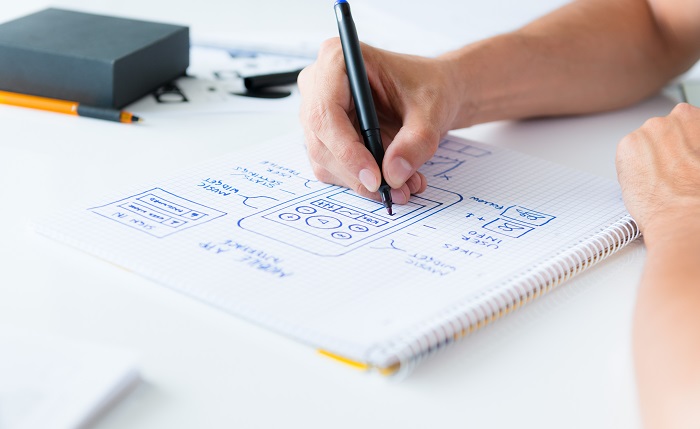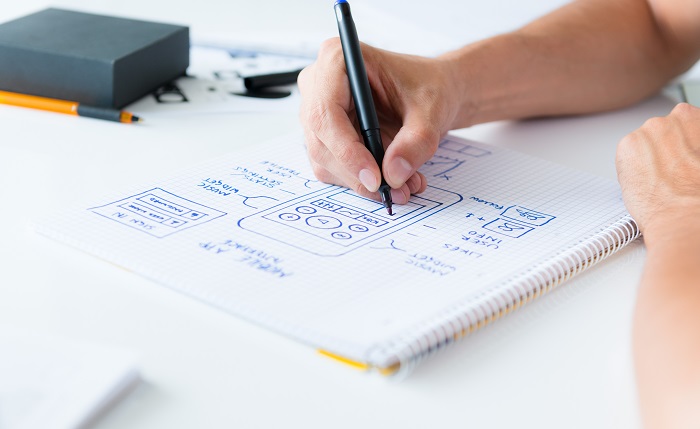Home > Blog > Pay Closer Attention to What Your UX Designer is Saying
Pay Closer Attention to What Your UX Designer is Saying

It’s no news that the UX Product Designer’s position overlaps extensively with the Product Manager’s. So much so, in fact, that in some cases of careless team management, clashes have been known to develop due to an absence of clarity as to seniority and leadership.
But that’s not what I want to talk about. I want to talk about what makes the person in charge of UX product design such a valuable member to the team, not the least *because* of all those overlaps with the product leader.
UX Product Designers are in Charge of Scaffolding
When you think about it, the UX Designer is the single member of your team that is head-over-heels involved in the product development process from its earliest stage. Product design, in the sense of primary prioritization and direction, is still just an idea until it is given shape and form.
Where product UX is concerned, the UX Designer is the one who crafts a structure and gives the vision form, borders and a visual direction. It takes a lot of experience, insight and multi-layered perspective to plan a properly scalable interface that appeals to the users it is meant for.
Your UX Designer is that person, who is also embedded in the process, on blueprint level, which makes their opinion pretty darn valuable. It does NOT mean blindly accepting what you are pitched, but their take on your product experience and user flows certainly entitles them to your attention.

The User Whisperer
Your UX professional is the most user-oriented member of your team other than you. This is inherent to the job description and the nature of the UX Designer’s work – to always consider the user’s perspective, above all and before all.
I mention this because the user experience, user personas, user feedback and professional experience with user interfaces – all of these are a critical aspect of the agile product development process.
In a product development environment where you often can’t afford the time or resources for user testing and data-based research, there needs to be a someone to champion the users, and that can’t always be the Product Manager.
The PM is driven by the bigger picture, which includes budgets, deadlines, stakeholders and technical constraints. The UX Designer becomes that person, which allows you, the PM, the flexibility to act out of strategic motivations.
Product UX is Hardcore
I know it sounds like I’m promoting an 80’s punk band, but I feel like I need to stress this point: UX is not a recommendation in the agile development process; it is not one of those “nice to have” positions, nor is it a “soft science” take on the product. User Experience is no less important than building the infrastructure of your code properly or marketing to the right audience. UX is an essential aspect of a successful product.
So much of the optimization process comes back to the users’ experience: we identify navigation blockages with heatmaps; new features are often the result of feature requests by beta users; we try to offer differentiating features to outdo our competitors (in the eyes of our users) and we are constantly working to iron the kinks, make the code run smoother and the UI glide more sleekly to appeal to our users and acquire more of them. Much of that is the UX Designer’s realm of responsibility.
Product Designer vs. UX Designer vs. Product Manager
These titles can become confusing, and they often mean different things in different organizations. So, let’s briefly review the differences between a Product Designer vs. a UX Designer and a UX Designer vs. a Product Manager.
UX Designer
This person is tightly focused on your user — always viewing your products’ functionality, visuals, and overall experience in terms of how it will affect users. Your UX Designer’s primary goal is to ensure your products are as intuitive, comfortable, and easy to navigate as possible.
Product Designer
The Product Designer has a broader and more strategic role of focusing on the product from a business standpoint. They might well have design responsibility and work closely with the UX Designer on the product’s user experience, but Product Designers also need to be taking into account the product’s business requirements.
Another difference is that because the role is more strategic than the UX Designer, the Product Designer tends to get involved in the product’s development from the earliest conceptual stages — perhaps creating the initial wireframes or digital mockups. As a result, Product Designers often take the design lead with new products, while an organization is more likely to task UX Designers with enhancing existing products.
Product Manager
The Product Manager is the most strategic of all of these positions, and in fact product and UX design are only two of many strategic areas the Product Manager will oversee.
Under ideal circumstances, the Product Manager will communicate the strategic vision, objectives, and plans for the product to the entire team — including the Product Designer and UX Designer, if the company is large enough to have these roles filled.
Can a UX Designer become a Product Manager?
The answer to this is a definite yes — for several reasons. First, as we discuss in our Product Management Career Path Guide, you can become a Product Manager with many different types of backgrounds. Businesses today recognize more than ever that all sorts of knowledge and professional experience can help a Product Manager succeed — expertise in business, analytics, engineering, marketing, and even design.
Also, UX Designers spend more time than people in almost any other profession learning about products, users, how to streamline solutions to make them more valuable for customers, and what works and what doesn’t when it comes to the user’s experience. That’s a background and skillset most organizations would love to have for their new Product Manager.

Okay, so who does what?
Now that we’ve reviewed the typical breakdown of responsibilities, it’s important to understand that the UX Designer’s role in any organization will depend a lot on the dynamics between PM and UX. There is no definitive answer to the question “who does what,” because a PM who is more of a “UX Product Manager” – minded to user-oriented design – may be more dominant in the process, while a more strategy-minded UX Designer should be able to make decisions which are not purely user-driven.
Melissa Perri, whom I’ve already referred to in this article, put it very articulately:
“Product Management with no User Experience Design creates functional products that don’t make users excited. User Experience Design with no Product Management produces delightful products that don’t become businesses.”
Personally, I’m a big fan of delegating. I prefer working with confident, experienced professionals so I can trust their opinion instead of having to specialize in everything. After all, as product managers we are a Jack-of-all-Trades and a master of none, and accepting that is always a good opening start for a fruitful and productive relationship with your team.
BONUS: sign up and get awesome visual Scrum board free for 14-days at craft.io

